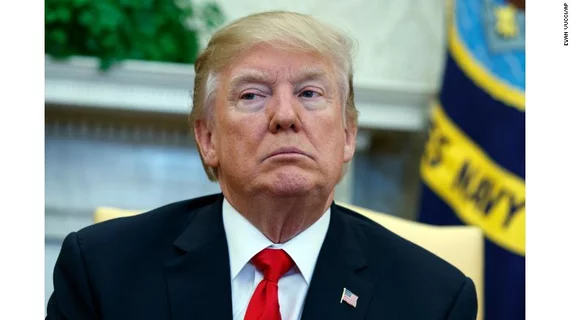Trump proposes tariffs on a host of Chinese imports—including medical imaging equipment
In what some are calling the early stages in a trade war between the world’s two largest economies, the U.S. government has announced plans to place tariffs on more than 1,000 products imported from China—including medical imaging equipment.
President Donald Trump signed an executive memorandum on March 22 and imposed tariffs on up to $60 billion in Chinese imports, calling it “the first of many” actions he would be taking against China for what his administration views as unfair trade practices. China hit back on April 4, announcing it would be imposing its own tariffs on 106 U.S. products.
The Office of the United States Trade Representative (USTR) has now published a proposed list of approximately 1,300 products imported from China that could be subject to additional tariffs. The “proposed action” on these items would be “an additional duty of 25 percent.” Medical imaging equipment appears on the list several times, including “Computed tomography apparatus based on the use of x-rays,” “Apparatus based on the use of x-rays for dental uses (other than computed tomography apparatus),” “Electromagnets used for MRI” and more.
“The proposed list of products is based on extensive interagency economic analysis and would target products that benefit from China’s industrial plans while minimizing the impact on the U.S. economy,” a statement from the USTR read. “Sectors subject to the proposed tariffs include industries such as aerospace, information and communication technology, robotics and machinery.”
So is the U.S. entering into a trade war with China? Different members of the Trump administration have spoken out, indicating this is just a negotiation tactic or that the public is overreacting. Trump tweeted that there was no trade war—while showing he had no plans on backing down.
“We are not in a trade war with China, that war was lost many years ago by the foolish, or incompetent, people who represented the U.S.,” he wrote in a tweet. “Now we have a Trade Deficit of $500 Billion a year, with Intellectual Property Theft of another $300 Billion. We cannot let this continue!”
As things escalate, however, more and more observers are starting to worry. Kenneth Jarrett, president of the American Chamber of Commerce in Shanghai, commented on the ongoing situation in the New York Times. “Companies are definitely caught in the middle of this,” Jarrett said.
The USTR is seeking public comment on this latest tariff announcement and says it will hold a public hearing. Requests to appear at the public hearing are due on April 23, and May 11 is the due date for submitting written comments. The public hearing is currently scheduled for May 15, and post-hearing “rebuttal comments” will be due on May 22.

